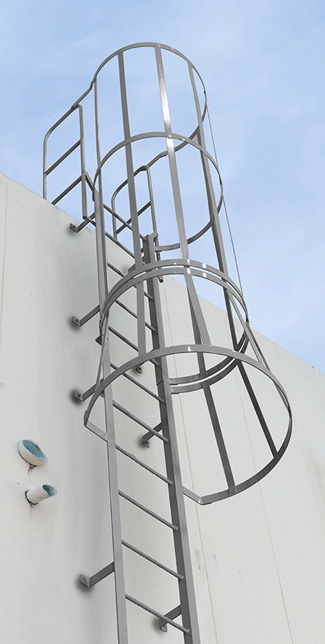
When it comes to working at heights, both ladders and scaffolds are commonly used tools in a variety of industries, including construction, maintenance, and even home improvement. However, despite their widespread use, accidents related to falls from ladders and scaffolds remain a significant safety concern. According to the Occupational Safety and Health Administration (OSHA), falls are the leading cause of workplace injuries and fatalities, and a large percentage of these falls occur while using ladders and scaffolds.
Understanding the proper safety guidelines when climbing ladders and scaffolds is crucial in preventing these accidents. Whether you’re climbing a simple ladder to change a lightbulb or working on a scaffold several stories up, adhering to safety protocols can help ensure that you complete the task without injury. In this article, we will discuss when and how to safely climb a ladder or scaffold, and the critical safety measures that should always be followed.
Why Ladder and Scaffold Safety Matter

Before delving into the specifics of climbing ladders and scaffolds, it’s essential to understand why ladder and scaffold safety should never be overlooked. Both ladders and scaffolds are designed to give workers access to higher areas, but improper use or failure to follow safety standards can lead to falls and serious injuries. According to OSHA, over 200,000 workers are injured annually due to ladder-related accidents, and scaffold-related accidents are also a major cause of workplace injuries.
Ladder and Scaffold Hazards:
- Ladder Hazards: Ladders are prone to tipping over, slipping, or collapsing if they are improperly positioned, damaged, or overused. Even when in good condition, human error, such as not maintaining three points of contact, can increase the risk of falling.
- Scaffold Hazards: Scaffolds are more complex structures and require additional safety measures. Improper scaffold assembly, lack of guardrails, or using a scaffold at unsafe heights can cause instability and lead to falls.
By understanding the proper way to climb both ladders and scaffolds, you can significantly reduce the risk of injury. Now, let’s explore the key safety guidelines to follow when using these equipment types.
How to Safely Climb a Ladder
Ladders are versatile tools, but they also present certain risks. The following ladder safety tips are essential for preventing accidents when climbing up or down a ladder.
1. Choose the Right Ladder for the Job
Before climbing, always make sure you choose the appropriate ladder for your task. Consider the following factors when selecting a ladder:
- Height: Ensure the ladder is tall enough to reach the area you need to access without needing to stretch or overreach.
- Weight Capacity: The ladder should support your weight, along with any tools or materials you may be carrying.
- Type of Ladder: There are different types of ladders, including step ladders, extension ladders, and folding ladders. Choose one that best suits your needs.
2. Inspect the Ladder
Always inspect the ladder for damage or wear before using it:
- Look for cracks, splits, or bends in the ladder frame or rungs.
- Make sure the ladder’s feet are intact and provide good traction.
- Ensure that all locking mechanisms (e.g., spreader bars on step ladders) are properly engaged.
3. Position the Ladder Correctly
Place the ladder on a firm, level surface. If you’re using an extension ladder, follow the 4:1 rule: for every 4 feet of height, the base of the ladder should be positioned 1 foot away from the wall. This ensures that the ladder is stable when climbing.
4. Climb with Three Points of Contact
Always maintain three points of contact with the ladder at all times—two hands and one foot, or two feet and one hand. This technique helps maintain balance and minimizes the risk of falling.
5. Face the Ladder and Avoid Overreaching
When climbing or descending, always face the ladder. Never turn your back or climb sideways, as it can lead to a loss of balance. Additionally, avoid overreaching; if you can’t reach something, climb down and reposition the ladder instead.
6. Avoid Carrying Items While Climbing
Never carry tools or materials in your hands while climbing a ladder. This reduces your ability to maintain three points of contact. Instead, use a tool belt or a rope to hoist tools up after you’ve safely reached your position.
7. Keep the Ladder Dry and Clean
If you’re working outdoors or in an area where the floor is slippery, ensure that the ladder rungs and feet are free from dirt, oil, or moisture. Wet or greasy ladders are extremely dangerous.
8. Don’t Stand on the Top Rung
For step ladders, avoid standing on the top rung or the top two rungs, as they are not designed for support. For extension ladders, do not stand on the top three rungs.
How to Safely Use a Scaffold

Scaffolds provide a stable platform for workers to perform tasks at elevated heights. However, the risks involved with scaffold use are much higher than those with ladders, due to the complexity of the equipment. Ensuring scaffold safety requires careful planning and attention to detail.
1. Inspect the Scaffold Before Use
Before using any scaffold, inspect it to ensure that it is safe:
- Ensure that the scaffold is level and stable. The foundation should be firm and able to support the scaffold’s weight.
- Check for any loose planks, damaged parts, or missing safety rails. If any components are damaged, repair or replace them immediately.
2. Follow Proper Assembly Guidelines
Only trained personnel should assemble or disassemble scaffolds. If you are working with a scaffold, ensure it is assembled according to the manufacturer’s instructions. Incorrect assembly can lead to serious accidents.
3. Use Guardrails and Safety Nets
Ensure that all scaffolds are equipped with proper guardrails at the edge. Guardrails should be installed at least 38 inches but not more than 45 inches above the platform. If working at high heights, use safety nets or harnesses to protect against falls.
4. Never Overload the Scaffold
Avoid overloading the scaffold with too much weight. Every scaffold has a specific weight limit, and exceeding this limit can cause the scaffold to collapse or tip over. Always check the load capacity before using a scaffold.
5. Climb and Descend with Care
When climbing a scaffold, use the designated access points, such as ladders or stairways, and always maintain three points of contact. Do not climb on the outside of the scaffold or use makeshift tools to reach higher areas. Always use a ladder or another safe means of access to reach higher levels.
6. Work Within Reach
When working from a scaffold, always stay within arm’s reach of your work area. Never lean too far out, as it could cause the scaffold to tip. If you need to reach further, climb down and reposition the scaffold.
7. Be Mindful of Weather Conditions
Wind, rain, or snow can make scaffolds slippery and unstable. Always check the weather conditions before working on a scaffold, and avoid working on scaffolds during extreme weather conditions. Wind speeds above 20 miles per hour (mph) can make scaffolds unsafe.
8. Use Personal Protective Equipment (PPE)
Workers should wear appropriate PPE when working on a scaffold. This includes hard hats, non-slip shoes, fall arrest systems (if necessary), and gloves. PPE helps protect you in case of a fall or other accident.
General Safety Guidelines for Ladder and Scaffold Use
1. Training and Certification
Ensure that all workers using ladders and scaffolds are properly trained in their use. This includes understanding how to inspect and set up the equipment, as well as knowing how to climb and descend safely. OSHA recommends that workers receive certification for scaffold use.
2. Keep Work Areas Clean and Organized
Keep the areas around ladders and scaffolds clear of debris or other hazards that could cause a fall. This includes materials, tools, and other objects that may create tripping hazards.
3. Maintain a Safe Work Zone
If you’re working on a scaffold or using a ladder at height, make sure that the area around you is free from other workers and bystanders. A designated “safety zone” will prevent accidents from occurring due to distractions or interference.
Conclusion
Climbing ladders and scaffolds requires a focus on safety, discipline, and attention to detail. By following the safety guidelines outlined in this article, you can significantly reduce the risk of injury when working at heights. Whether you’re using a ladder for a simple task or working on a scaffold at significant heights, taking the time to ensure that the equipment is set up correctly and that you’re following best practices will help keep you safe.
Remember, falls from ladders and scaffolds are preventable. Always inspect your equipment, follow safety protocols, and never take shortcuts. Whether you’re in construction, maintenance, or any other field requiring ladder or scaffold use, safety should always be your top priority.
RELATED POST
- Get the Ladder in Animal Crossing
- Do You Unlock the Ladder in Animal Crossing
- When is Fall Protection Required on a Ladder
- When Is the Diablo 2 Ladder Reset
Recent Posts
Maintaining clean gutters is essential for preventing water damage to your home, and choosing the best ladder for cleaning gutters can make the job much easier and safer. With so many options on the...
Best Ladder for Cleaning Caravan Roof: Top Picks for You Every Adventure!
Today we will discuss the best ladder for cleaning caravan roof. Cleaning caravan roofs is one of the crucial tasks.After many days, a caravan roof can get dirty by debris, dirt, and grime. These can...
